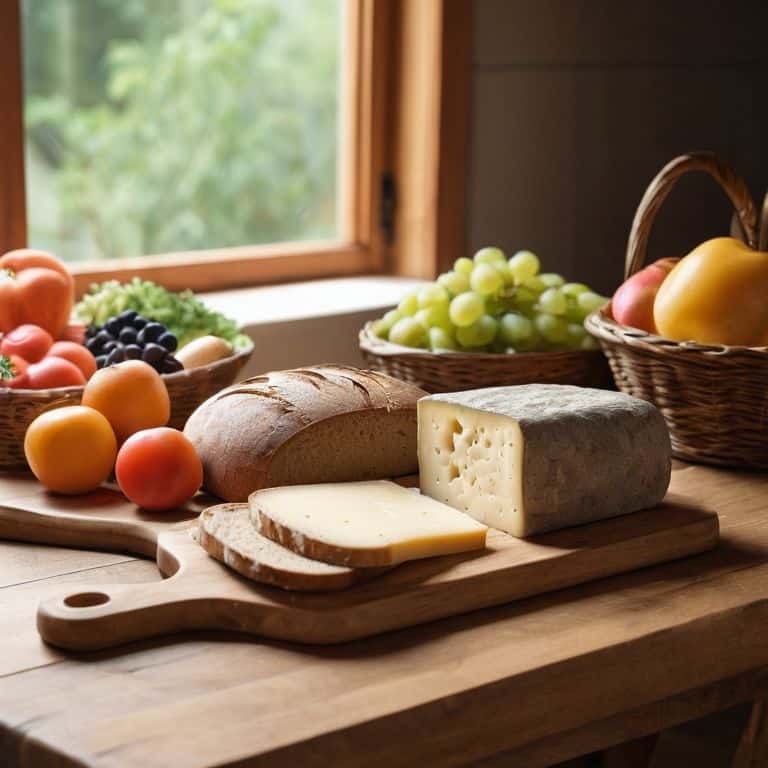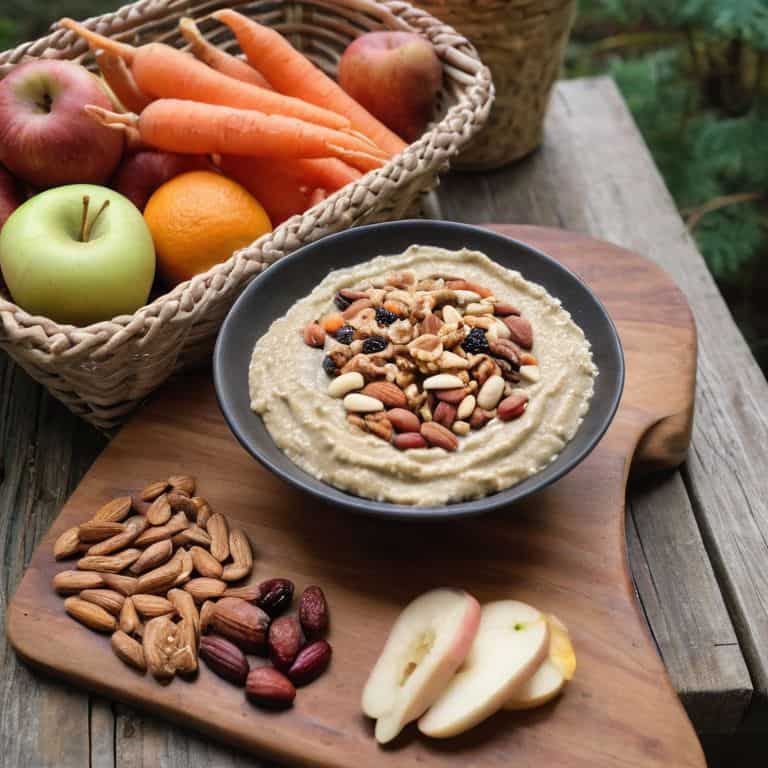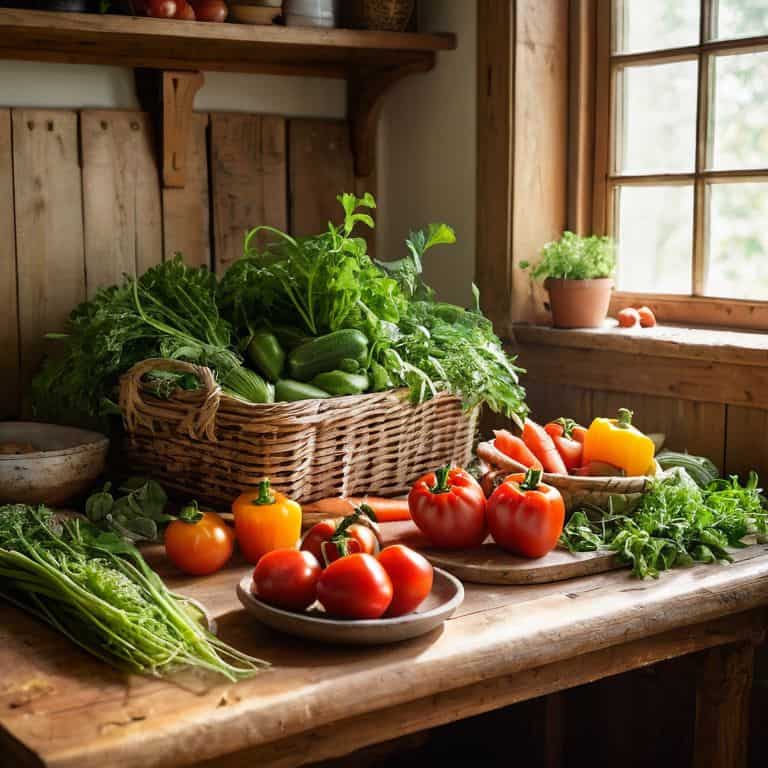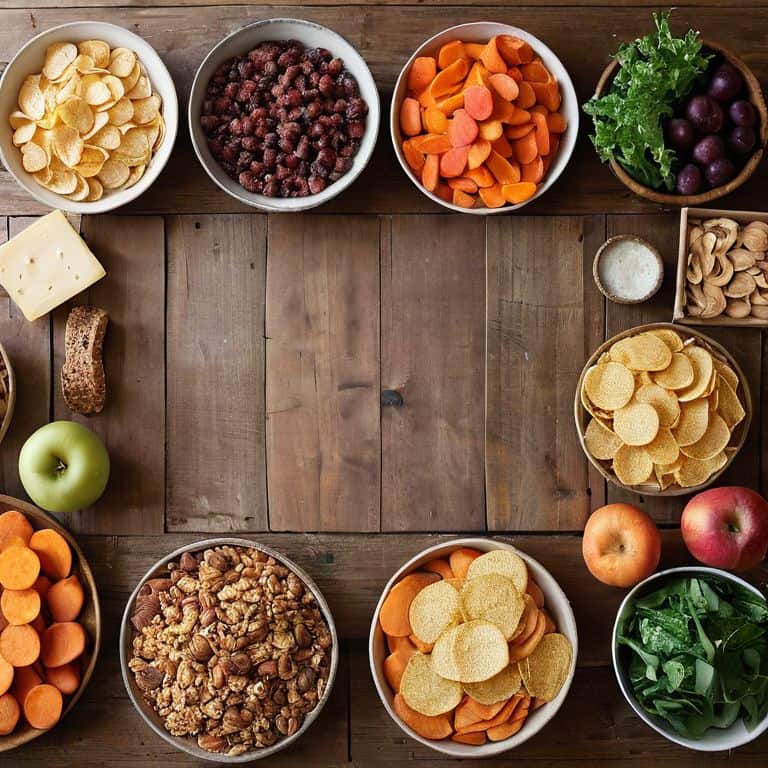I still remember the day I realized that the key to a healthy diet wasn’t about cutting out entire food groups, but about finding a balance that nourishes both my body and soul. As a nutritionist, I’ve seen far too many people struggle with the concept of a guide to unprocessed vs processed foods, feeling like they need to choose between the two. But what if I told you that this dichotomy is not only unnecessary, but also misleading? The truth is, a healthy diet can include both unprocessed and processed foods, and it’s all about understanding how to make them work together in harmony.
In this article, I’ll share my expertise on how to navigate the world of unprocessed vs processed foods with confidence and joy. You’ll learn how to make informed choices that prioritize your health and satisfaction, without feeling deprived or restricted. I’ll provide you with practical tips and tricks for incorporating more whole foods into your diet, while still allowing for the occasional indulgence in your favorite processed treats. My goal is to empower you with the knowledge and skills to create a balanced and nourishing diet that you’ll actually enjoy, and that will leave you feeling fulfilled and energized.
Table of Contents
- Guide Overview: What You'll Need
- Step-by-Step Instructions
- Joyful Guide to Unprocessed Foods
- 5 Tips to Harmonize Your Diet: Unprocessed vs Processed Foods
- Key Takeaways for a Joyful Eating Journey
- Finding Harmony in Food Choices
- Embracing the Balance: A Joyful Path Forward
- Frequently Asked Questions
Guide Overview: What You'll Need

Total Time: 1 hour 30 minutes
Estimated Cost: $0 – $10
Difficulty Level: Easy
Tools Required
- None No special tools required
Supplies & Materials
- Grocery List To compare unprocessed and processed food options
Step-by-Step Instructions
- 1. First, let’s start by defining what unprocessed and processed foods are. Unprocessed foods are whole, minimally altered foods like fruits, vegetables, whole grains, lean proteins, and healthy fats. On the other hand, processed foods have been altered in some way, either for convenience, safety, or shelf life. This can include anything from canned goods to frozen meals.
- 2. Next, I want you to take a closer look at your pantry and fridge. Take note of the foods you have on hand and categorize them into unprocessed and processed groups. Don’t worry too much about judging yourself at this stage – we’re just gathering information to understand our starting point.
- 3. Now, let’s focus on adding more whole foods to your diet. Start by exploring your local farmers’ market or grocery store to find fresh, seasonal produce. Try to include a variety of colors on your plate to ensure you’re getting a range of vitamins and minerals. I love getting inspiration from the vibrant displays at my local market and planning my meals around what’s in season.
- 4. When it comes to processed foods, it’s not about eliminating them entirely, but about making informed choices. Look for products that are low in added sugars, salt, and unhealthy fats. Choose items that are rich in whole grains, fiber, and protein. Remember, even healthier processed options should be consumed in moderation as part of a balanced diet.
- 5. To make the transition smoother, try recreating your favorite comfort foods with healthier twists. For example, if you love pizza, try making your own whole-grain crust and loading it with roasted vegetables and lean protein sources. This way, you can still enjoy the foods you love while nourishing your body.
- 6. Meal planning and prep are key to maintaining a balance between unprocessed and processed foods. Set aside some time each week to plan your meals, make a grocery list, and prep any ingredients you can ahead of time. This will help you stay on track and ensure that you’re getting the nutrients you need without feeling overwhelmed.
- 7. Finally, don’t forget to listen to your body and honor your cravings. If you’re really craving something, try to find a healthier alternative that satisfies your craving. Remember, the goal is to nourish your body and find joy in the process, not to follow a restrictive diet that leaves you feeling deprived. By focusing on addition rather than subtraction, you’ll be more likely to stick to your healthy habits in the long term.
Joyful Guide to Unprocessed Foods

As I hit the trails for a morning run, I love fueling up with whole grain foods that give me sustained energy. The benefits of these foods are numerous, from reducing inflammation to promoting a healthy gut. When it comes to incorporating more unprocessed foods into your diet, it’s all about making gradual swaps. Try replacing your usual snack with unprocessed snack options for kids, like fresh fruit or carrot sticks with hummus.
Reading food labels can be overwhelming, but it’s a crucial step in understanding what you’re putting into your body. As a nutritionist, I always recommend reading food labels for beginners to get a sense of what to look for. Be mindful of added sugars, sodium, and unhealthy fats. Instead, opt for foods that are rich in nutrients and low in processed ingredients.
By focusing on a whole food based diet plan, you can break free from the cycle of processed food addiction. This means embracing a variety of colorful fruits and veggies, whole grains, and lean proteins. Remember, it’s all about progress, not perfection. Don’t be too hard on yourself if you slip up – simply get back on track and keep moving forward. With time and practice, you’ll find that nourishing your body with whole foods brings a sense of joy and satisfaction that processed foods just can’t match.
Breaking Free From Processed Food Addiction Symptoms
As I’ve worked with clients to transition to whole foods, I’ve seen firsthand the struggles of breaking free from processed food addiction. Symptoms can range from headaches and fatigue to irritability and cravings. But here’s the thing: these symptoms aren’t a sign of weakness, they’re a sign that your body is adjusting to a new normal. By incorporating more unprocessed foods into your diet, you’ll start to notice a shift in your energy levels, your mood, and even your taste buds. The key is to focus on addition, not subtraction – add more whole grains, fruits, and veggies to your plate, and watch as your cravings for processed foods start to fade.
Nourishing Benefits of Whole Grain Delights
Whole grain delights are a staple in my kitchen, and for good reason. Not only do they add texture and depth to my favorite dishes, but they’re also packed with nutrients like fiber, vitamins, and minerals. I love experimenting with different types of whole grains, from quinoa and brown rice to farro and bulgur. Each one brings its own unique flavor and nutritional profile to the table. By incorporating whole grains into my meals, I’m able to nourish my body and satisfy my cravings at the same time.
The benefits of whole grains are numerous, and I’m excited to share them with you. From reducing inflammation to promoting healthy digestion, whole grains are a simple yet powerful way to upgrade your diet. Plus, they’re incredibly versatile – try using them as a base for salads, as a side dish, or even as a crunchy topping for your favorite soups and stews. With so many delicious and nutritious options to choose from, it’s easy to make whole grains a joyful part of your daily routine.
5 Tips to Harmonize Your Diet: Unprocessed vs Processed Foods
- Start Your Day with Whole: Begin your morning with unprocessed foods like oatmeal with fruits and nuts to kickstart your nutrient intake
- Be Kind to Your Gut: Incorporate fermented foods like kimchi, sauerkraut, or yogurt to support your gut health and boost your immune system
- Read Labels with Love: When opting for processed foods, choose ones with recognizable ingredients and minimal added sugars, salts, and unhealthy fats
- Find Joy in Meal Prep: Set aside time each week to prepare healthy, unprocessed meals that bring you joy, such as trail mix, energy balls, or a hearty salad
- Make Peace with Portion Control: Allow yourself to indulge in processed treats, but practice mindful eating and portion control to maintain a balanced diet that nourishes both body and soul
Key Takeaways for a Joyful Eating Journey
Nourish your body with whole, unprocessed foods to unlock their nutritional benefits and satisfy your cravings
Break free from the guilt and stigma associated with processed foods by embracing them in moderation as part of a balanced diet
Focus on adding nutrient-dense foods to your meals rather than just cutting calories, and remember that joy is the healthiest ingredient in any recipe
Finding Harmony in Food Choices
The most powerful way to nourish your body isn’t by cutting out the foods you love, but by embracing a balanced approach that celebrates both the vibrancy of whole foods and the convenience of processed ones, all while honoring your unique cravings and needs.
Laura Paskal
Embracing the Balance: A Joyful Path Forward

As we conclude our journey through the world of unprocessed and processed foods, let’s recap the key takeaways: whole foods offer a wealth of nutritional benefits, from the nourishing benefits of whole grain delights to the satisfaction of biting into a crunchy, fresh vegetable. By understanding the differences between unprocessed and processed foods, we can make informed choices that honor our cravings while nourishing our bodies. Remember, it’s not about labels or restrictions, but about cultivating a balanced relationship with the food that brings us joy and satisfaction.
As you move forward on your own path, I encourage you to view this journey as an opportunity to rediscover the joy of eating. Don’t be afraid to get creative in the kitchen, to try new recipes, and to explore the vibrant colors and flavors of whole foods. By embracing this balanced approach, you’ll not only nourish your body, but also reclaim the pleasure of mealtimes, making every bite a celebration of flavor, texture, and love. So go ahead, take a deep breath, and let the journey begin – your taste buds, and your body, will thank you!
Frequently Asked Questions
How can I balance my desire for convenient, processed foods with the need to incorporate more unprocessed, whole foods into my diet?
I totally get it – convenience vs nourishment can be a tough tug-of-war! For me, it’s all about finding that sweet spot where whole foods and processed treats coexist in harmony. Try designating certain days for whole food meals and allowing yourself processed favorites in moderation, like a weekend pizza night or a quick weeknight pasta dinner.
What are some common myths about unprocessed vs processed foods that I should be aware of?
Let’s debunk some myths! Many think unprocessed foods are always better, but that’s not entirely true. Some processed foods, like canned beans or frozen veggies, can be just as nutritious as their fresh counterparts. And, on the flip side, not all unprocessed foods are created equal – some can be high in sugar or unhealthy fats.
Are there any specific health benefits to choosing unprocessed foods over processed ones, and how can I make sure I'm getting the most nutritional value from my food choices?
Choosing unprocessed foods can boost fiber, vitamin, and mineral intake, while reducing sodium and added sugars. To maximize nutrition, focus on whole grains, fruits, and veggies, and explore new seasonal ingredients at your local farmers’ market – it’s a great way to add variety and joy to your meals!
